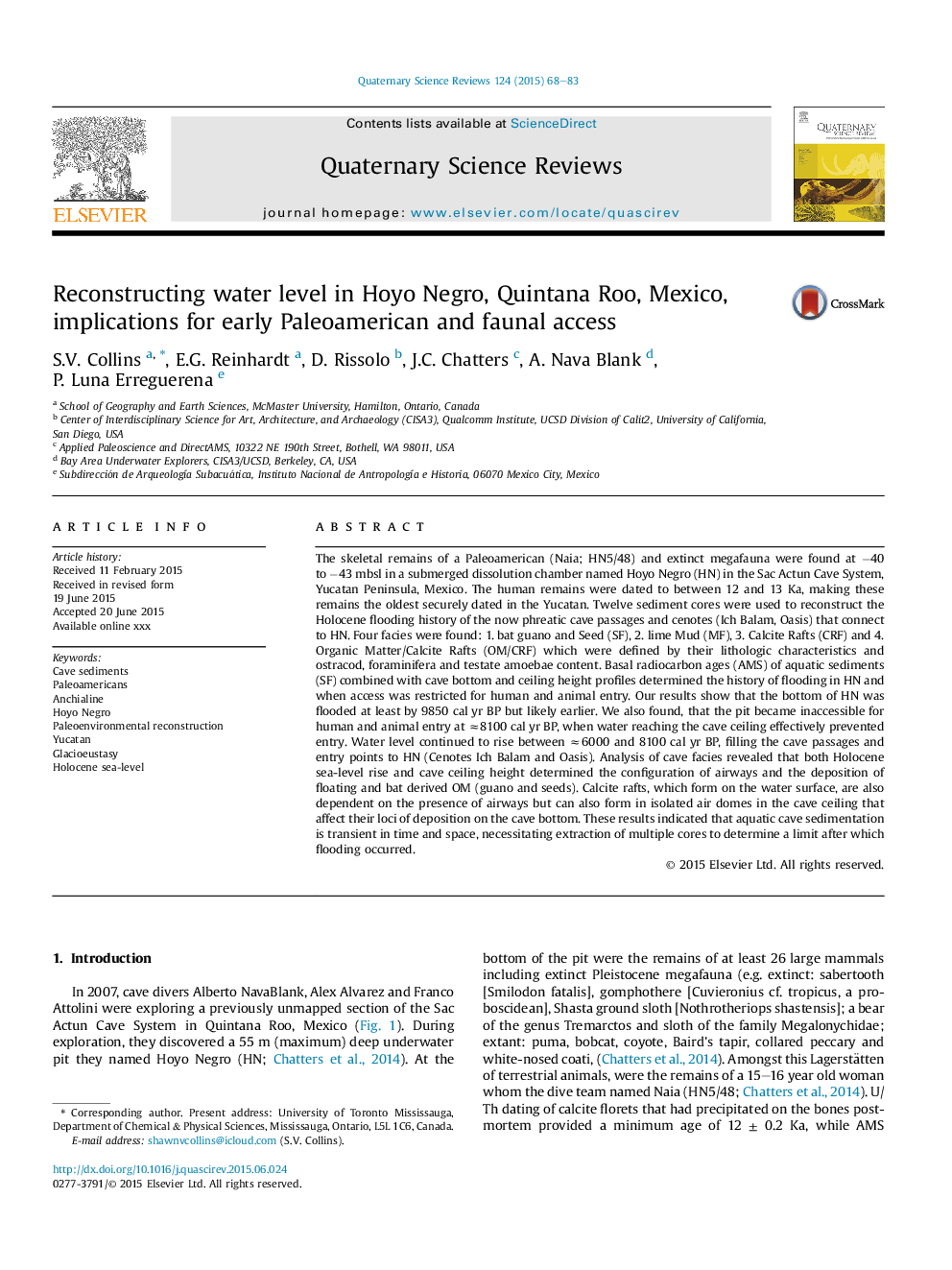| Article ID | Journal | Published Year | Pages | File Type |
|---|---|---|---|---|
| 6445507 | Quaternary Science Reviews | 2015 | 16 Pages |
Abstract
The skeletal remains of a Paleoamerican (Naia; HN5/48) and extinct megafauna were found at â40 to â43 mbsl in a submerged dissolution chamber named Hoyo Negro (HN) in the Sac Actun Cave System, Yucatan Peninsula, Mexico. The human remains were dated to between 12 and 13 Ka, making these remains the oldest securely dated in the Yucatan. Twelve sediment cores were used to reconstruct the Holocene flooding history of the now phreatic cave passages and cenotes (Ich Balam, Oasis) that connect to HN. Four facies were found: 1. bat guano and Seed (SF), 2. lime Mud (MF), 3. Calcite Rafts (CRF) and 4. Organic Matter/Calcite Rafts (OM/CRF) which were defined by their lithologic characteristics and ostracod, foraminifera and testate amoebae content. Basal radiocarbon ages (AMS) of aquatic sediments (SF) combined with cave bottom and ceiling height profiles determined the history of flooding in HN and when access was restricted for human and animal entry. Our results show that the bottom of HN was flooded at least by 9850 cal yr BP but likely earlier. We also found, that the pit became inaccessible for human and animal entry at â8100 cal yr BP, when water reaching the cave ceiling effectively prevented entry. Water level continued to rise between â6000 and 8100 cal yr BP, filling the cave passages and entry points to HN (Cenotes Ich Balam and Oasis). Analysis of cave facies revealed that both Holocene sea-level rise and cave ceiling height determined the configuration of airways and the deposition of floating and bat derived OM (guano and seeds). Calcite rafts, which form on the water surface, are also dependent on the presence of airways but can also form in isolated air domes in the cave ceiling that affect their loci of deposition on the cave bottom. These results indicated that aquatic cave sedimentation is transient in time and space, necessitating extraction of multiple cores to determine a limit after which flooding occurred.
Keywords
Related Topics
Physical Sciences and Engineering
Earth and Planetary Sciences
Geology
Authors
S.V. Collins, E.G. Reinhardt, D. Rissolo, J.C. Chatters, A. Nava Blank, P. Luna Erreguerena,
